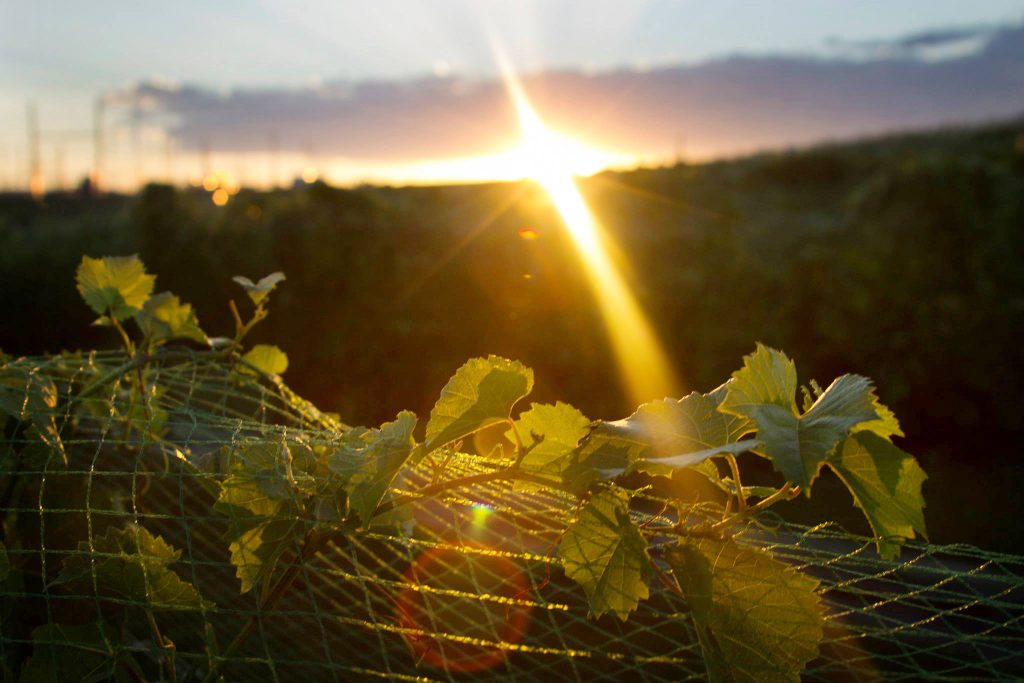Featured in Men’s Journal
By Matthew Kaner – Will Travel for Wine
Famous for its love of American Presidents and the yearly Sturgis rally, South Dakota (affectionately abbreviated by locals to SoDak) has been keeping a bit of a secret. Wine production in the state is a tricky proposition due to the extreme winter conditions for much of the year. The challenge of growing a quality vineyard starts with the long winter, that can stretch into April or May, leaving budding vines exposed to frost for an extended period of time. Imagine the many sleepless nights for vineyard owners, with next challenge being posed in the form of a short growing season. Vines have to pack ripening into a condensed window that opens with a warm vengeance and closes with a cold arctic breeze. This is no place for a fussy grape variety like Pinot Noir, which requires ideal conditions to produce a wine of quality and elegance. Instead, you’ll find a series of University Lab-raised hybrid grape varieties that have been crossed and engineered to handle the blistering cold and potential of frost. This is why you now must know about Marquette…
Marquette was introduced in 2006 by the University of Minnesota, a cross between two other hybrids: MN 1094 and Ravat 262. All things being equal, Marquette can be described as a cousin of Frontenac and grandson of Pinot Noir. Known as a disease resistant red grape variety that produces medium-bodied, dry, red wine and is suitable for extended maturation in oak barrels. Over time, it has become one of the most popular grapes adapted to cold climates. Imagine if Pinot Noir or Gamay had a baby with Syrah. Elegant aromatics, textually pleasing on your palate, with notes of red fruits and delicate black pepper. With the harsh growing conditions in South Dakota, Marquette is quite well suited due to its moderate resistance to black rot, botrytis bunch rot, and both downy & powdery mildew.
The first Marquette I tasted came from Firehouse Wine Cellars, based in Rapid City. Aptly named “The American“, it is an homage to the owner’s grandfather who emigrated to the USA nearly 100 years ago on a ship called America en route from Genoa, Italy. The winery was founded as an extension of the popular brewery, first established in 1991 at the site of Rapid City’s first Firehouse which was built in 1915. The Marquette is grown on their small vineyard a few miles away from the Rapid City tasting room location, inhospitable weather has made production of the wine inconsistent in recent years, so I began to realize how rare the opportunity was to taste South Dakota-grown wine in South Dakota.
called America en route from Genoa, Italy. The winery was founded as an extension of the popular brewery, first established in 1991 at the site of Rapid City’s first Firehouse which was built in 1915. The Marquette is grown on their small vineyard a few miles away from the Rapid City tasting room location, inhospitable weather has made production of the wine inconsistent in recent years, so I began to realize how rare the opportunity was to taste South Dakota-grown wine in South Dakota.
My second experience with Marquette proved to be a time capsule-esque moment. While visiting Belle Joli’ in Sturgis, the owners Matthew & Choi Jackson setup a tasting of their incredible sparkling wines, with a series of their still wines following. In the flight they wove in the opportunity to taste one of the last remaining bottles of their 2012 estate grown Marquette, which proved to be a magical look at how the grape can age when cared for by discerning farmers, winemakers, and cellar masters. As I tasted the 2012 vintage alongside the 2020 I couldn’t help but feel there was quiet vinous brilliance hiding in South Dakota’s Black Hills. This inspired me to dig deeper into Marquette, and echo its discreet deliciousness to all who will listen.
The wine-loving Jackson family had always wanted to optimize the full potential of the rich Black Hills soils, and bring their dreams of making locally grown and produced wine come to life. Matthew (the winemaker) graduated in the Enology program at California State University Fresno. It was there that he met Choi, (CFO/Certified Sommelier CMS) and upon completion of their studies, the couple boldly chose South Dakota as the destination to fulfill their family’s passion of the winemaking process. Inspired by the unique beauty and legacy of the land in the Black Hills, they chose the name Belle Joli’ for their vineyard, and in 2000, they planted their first vines in the heart of Belle Fourche. The winery’s presence now stretches across the Northern Black Hills into Deadwood and Sturgis, where a new state-of-the-art facility produces sparkling wine, utilizing traditional champagne methods.









